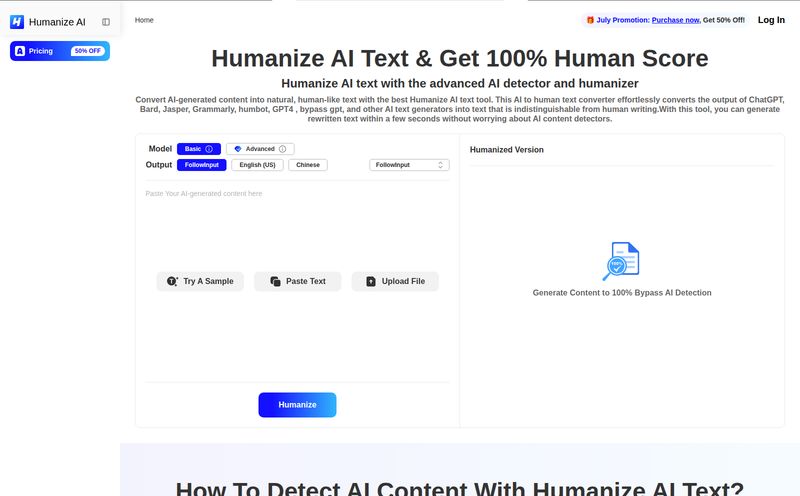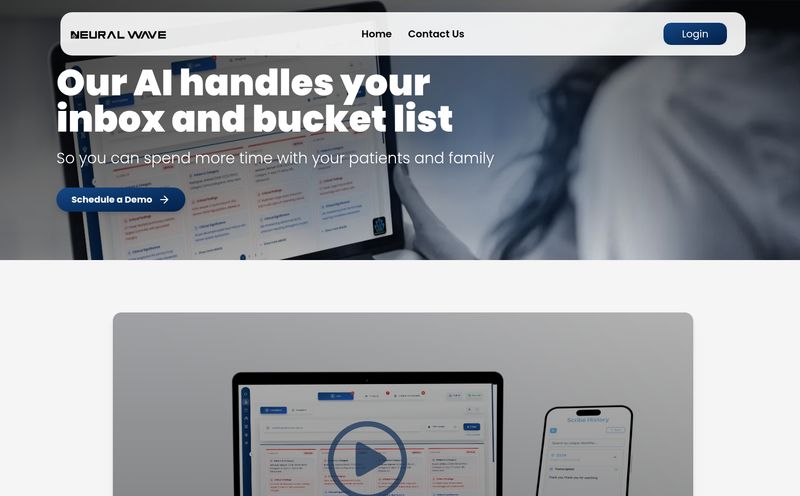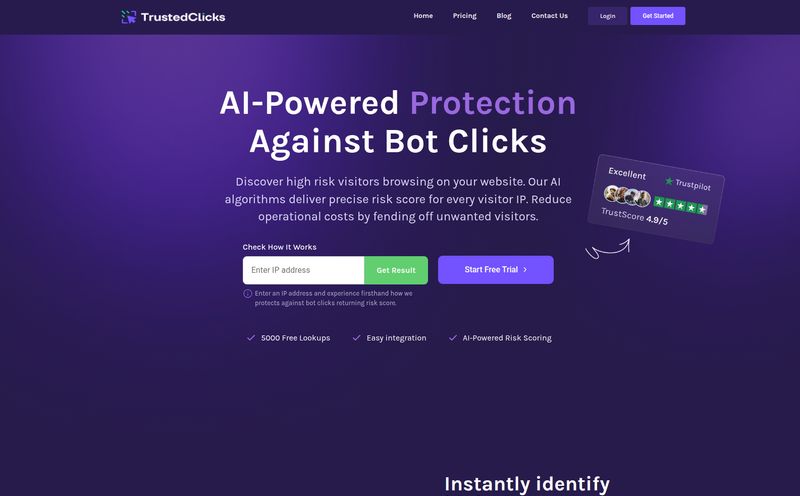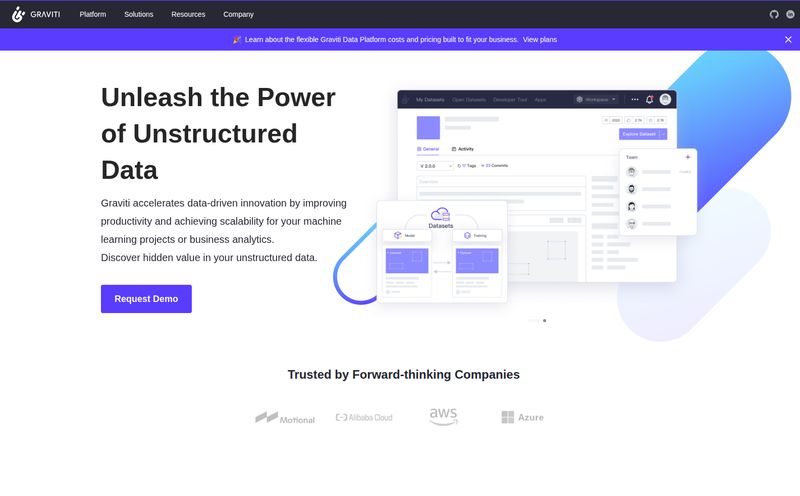Let’s talk about something we all just love doing: vendor risk assessments. Said no one, ever. For years, it’s been this necessary evil lurking in the shadows of procurement and IT. A murky world of endless spreadsheets, chasing vendors for answers, and sometimes, forking over a small fortune to consultants who speak in acronyms.
I've been in the SEO and digital marketing game for a long time, and I've seen companies get bogged down by this process. It stalls projects. It burns cash. It makes you want to tear your hair out. So, when a tool like Proof & Trust pops up on my radar claiming to be the “World’s 1st automated tool for Vendor risk assessment,” my cynical-but-hopeful expert ears perk up.
Is it just another SaaS tool with a fancy landing page, or is there some real substance here? I decided to dig in and see what’s what. This isn’t going to be a sterile, by-the-book review. This is my real, unfiltered take.
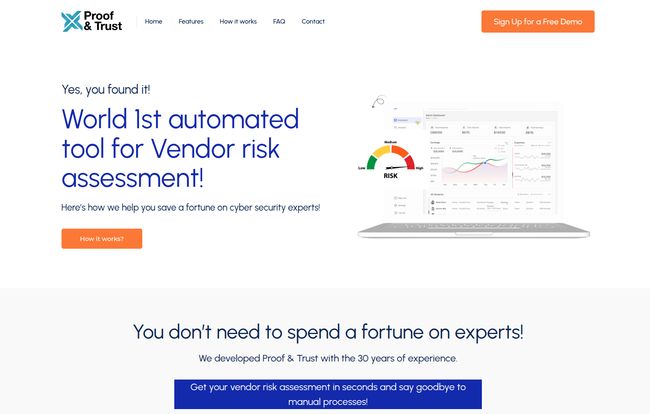
Visit Proof&Trust
First, Why Do We Suffer Through Vendor Risk Assessments?
Before we get into the tool itself, a quick refresher. A Vendor Risk Assessment (or VRA) is basically your company’s due diligence. You’re checking to see if a potential partner—be it a software provider, a contractor, or a supplier—has their act together, especially on the cybersecurity and compliance front. Bringing on a new vendor is like giving someone a key to a room in your house. You’d better be sure they’re not going to leave the window open or track mud on the carpet. A data breach from a third party can be catastrophic, so yeah, it’s important. Just… soul-crushingly tedious.
Enter Proof & Trust: The Promise of a Simpler Life
So, what exactly is Proof & Trust? At its core, it’s an automated, cloud-based platform designed to take the manual labor and guesswork out of VRAs. The website mentions it was developed with “40 years of experience,” which I take to mean the team behind it are seasoned pros, not fresh-faced grads. They’ve clearly felt the pain points firsthand.
The entire pitch is about getting you out of the weeds. No more waiting weeks for assessments. No more trying to decipher complex technical answers. And crucially, no more hiring expensive external experts for what should be a straightforward process. It’s a bold promise, for sure.
How It Works (Without the Corporate Jargon)
I’m all about simplicity, and the process here seems to reflect that. It’s not some convoluted system that requires a PhD to operate. It boils down to a few logical steps:
- You Invite the Vendor: This is as simple as it sounds. You plug in your vendor’s details, and Proof & Trust shoots them an email with a link to a secure questionnaire. The vendor can even save their progress and come back later, which is a nice touch. No one likes a form that times out.
- The AI Does the Heavy Lifting: Once the vendor submits their answers, the platform’s algorithm gets to work. They tout it as using “cutting-edge machine learning and AI,” which is the new “now with more cheese!” of the tech world. But here, it actually makes sense. The AI analyzes the responses, scores the risks, and basically translates geek-speak into business-speak.
- You Get a Clear Report: The final output isn’t a 200-page document filled with jargon. It’s a report with actionable insights. It tells you where the risks are and what you should probably do about them. It's like having a risk assessment translator on call 24/7.
This whole flow is designed to cut out the middleman and the manual back-and-forth. It’s a direct line from your question to a clear, analyzed answer.
The Good Stuff: What I Genuinely Appreciate
From my analysis, a few things really stand out. First, the time and money savings are a no-brainer. The cost of a single consultant can easily run into thousands of dollars. A subscription to a tool like this, even if premium, is almost certainly going to be more cost-effective over a year. Time is the other currency. The website claims you can accelerate productivity, not risk, and I believe it. Cutting down a weeks-long process to a few days? That’s huge.
The user-friendly interface is another big win. The last thing anyone wants is a tool meant to simplify things that requires its own week-long training course. Proof & Trust seems built for the business manager, the IT director, or even the small business owner who wears all the hats—not just the hardcore compliance officer. It lowers the barrier to entry for proper risk management, which I think is fantastic.
Let’s Be Real: The Potential Sticking Points
Now, no tool is perfect. And my job is to look at this with a critical eye. There are a couple of things that give me pause.
The first is the classic “garbage in, garbage out” problem. The entire assessment hinges on the accuracy of the information provided by the vendor. If they stretch the truth or simply misunderstand a question, the AI’s analysis will be based on flawed data. Proof & Trust can’t magically fact-check every claim. So, a layer of trust (ironic, given the name) is still required.
Second, the process seems fairly standardized. The website talks about a “predefined questionnaire.” For most businesses, this is probably fine—great, even. But for a large enterprise in a niche, highly-regulated industry (like finance or healthcare), they might need more granular control and the ability to customize the assessment process heavily. The out-of-the-box solution might feel a bit restrictive for them.
Finally, you’re still dependent on the vendor to actually do the thing. We've all been there, chasing people for information. The tool makes it easier, but it can’t force a lazy or disorganized vendor to fill out the form.
What's the Damage? A Look at Proof & Trust's Pricing
Ah, the million-dollar question. Or, hopefully, a lot less than that. I went looking for a pricing page, and... I hit a 404 error. A classic “Oops! That page can’t be found.”
While a little amusing, it's pretty common for B2B SaaS tools in this space. It usually means they don’t have a one-size-fits-all pricing model. Instead, you'll likely need to “Sign up for a Free Demo” to get a custom quote based on your needs—how many vendors you assess, what features you need, etc. The good news is they explicitly mention “no hidden or additional costs” and “flexible subscription options,” which suggests they’re not trying to lock you into draconian long-term contracts.
So, Who Is This Actually For?
In my opinion, Proof & Trust hits a sweet spot. It's perfect for small to medium-sized businesses (SMBs) or even mid-market companies that don't have a dedicated, full-time risk management team. If you're a company that knows you should be doing VRAs but you're currently using a spreadsheet and a prayer, this tool could be a game-changer. It automates a complex task and provides real, actionable intelligence without needing a dedicated expert on staff.
If you're a massive, global corporation with a team of 50 compliance lawyers who have their own bespoke, multi-layered risk framework… this might be too simple for you. But for the other 95% of businesses, simplicity is a feature, not a bug.
Frequently Asked Questions
Do I need to be a tech wizard to use this?
Absolutely not. The platform is designed to be user-friendly for people who aren't familiar with the nitty-gritty of risk assessment. If you can send an email, you can use this tool.
Is Proof & Trust a SaaS platform?
Yes, it's a fully cloud-based SaaS (Software as a Service) tool. That means no software to install or maintain. You can access it from anywhere, 24/7, which is a huge plus.
How secure is the data I and my vendors provide?
According to their site, they use industry-standard security measures to safeguard data. For a tool dealing with sensitive risk information, this is non-negotiable, and it seems they take it seriously.
What if my vendor has questions or gets stuck?
The process is designed to be straightforward for the vendor. The ability to save their progress and complete the questionnaire in stages, rather than all at once, really helps reduce friction.
Am I locked into a long-term contract?
The platform mentions “flexible subscription options,” which strongly suggests they offer plans that don’t require a massive upfront commitment or a multi-year lock-in. You'll have to confirm during the demo, of course.
The Final Word on Proof & Trust
Look, the world of third-party risk isn't getting any simpler. If anything, it's becoming more critical with every new data breach headline. Sticking your head in the sand is no longer an option. Tools that automate and simplify these complex, mandatory tasks are not just nice-to-haves; they are becoming essential for smart, efficient business operations.
From what I've seen, Proof & Trust is a very strong contender in this space. It's not trying to be a complex, all-encompassing GRC (Governance, Risk, and Compliance) behemoth. It does one thing—vendor risk assessment—and it appears to do it well, with a clear focus on saving time, money, and sanity. For any business tired of the old spreadsheet grind, scheduling a demo seems like a very, very smart use of time.
